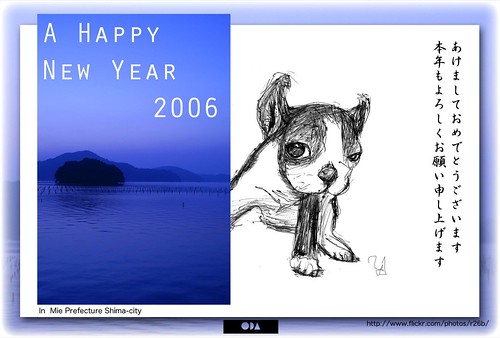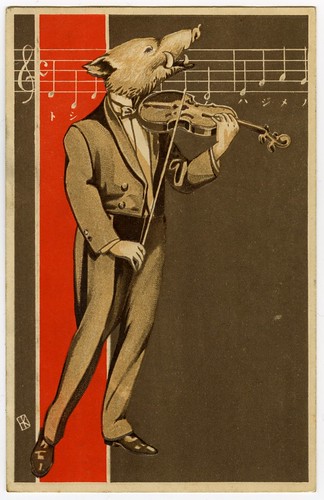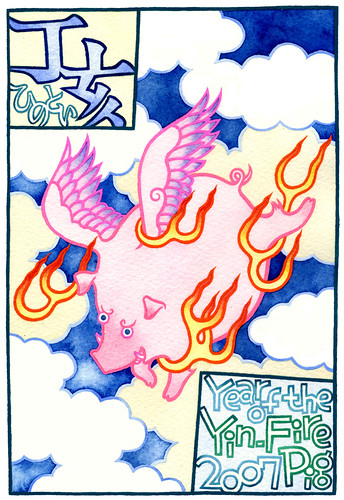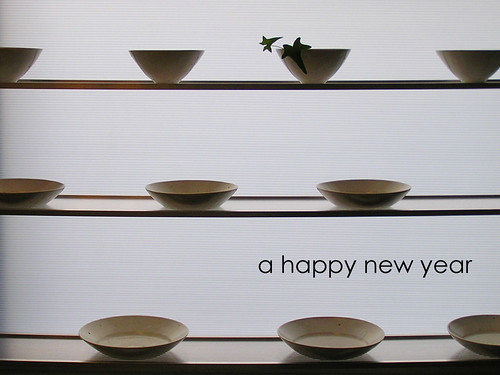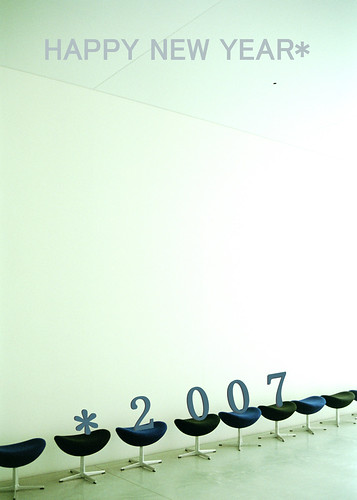In Japan, starting from mid-December, everybody starts sending nengajo 「年賀状」, New Year postcards for friends, relatives and colleagues. According to the tradition, nengajo should be delivered on the January 1st, and if the postcards are marked with the word nengajo and if they are posted on time (usually before December 25th), the Japan Post guarantees the delivery on time. Since almost every Japanese sends tens of these nengajo, the Post hires part-time workers to deliver all of them on the 1st day of the New Year.
The tradition of sending nengajo is very old, dating back in the Heian Period. It became a popular custom in 1871, when the postal service was founded. A couple of years later, the post started selling printed postcards and the number of nengajo grew so fast that in 1899 the post started handling the nengajo separately from the rest of the correspondence.
From 1950s, nengajo postcards printed with lottery numbers appeared, sold by the Ministry of Posts. They are still in use today, the lucky draw is held on January 15th and several billion are sold anually.
However, during the last years, the traditional postcards are replaced by electronic nengajo (delivered by e-mail or via mobile phone), made even with the lottery numbers, popular especially with the younger generation.
Of course, for persons with higher rank, teachers or business partners, the traditional postcards are still preferred...
I selected from Flickr several nengajo pictures, and if you want to see an electronic nengajo website, just search Google for 年賀状... :)
Începând cu jumătatea lunii decembrie, în Japonia încep să se trimită nengajo ( 年賀状 ), felicitări de Anul Nou pentru prieteni, rude şi colegi. Conform tradiţiei, nengajo se livrează pe data de 1 ianuarie. Dacă scrisorile sunt marcate cu cuvântul nengajo şi sunt puse la poştă în timp util, până în jur de 25 decembrie, poşta garantează că vor fi livrate la timp. Cum fiecare japonez trimite în medie câteva zeci de nengajo, poşta angajează lucrători temporari pentru a putea livra toate scrisorile în aceeaşi zi.
Tradiţia de a trimite nengajo este foarte veche, încă din perioada Heian. Obiceiul însă a devenit popular odată cu înfiinţarea poştei în Japonia, în anul 1871. Doi ani mai târziu, poşta a început să vândă nengajo tipărite, iar numărul lor a crescut atât de repede încât începând cu 1899 a început să le trateze separat faţă de restul corespondenţei.
Începând cu 1950, au apărut nengajo pretipărite cu numere la loto, vândute de Ministerul Poştei şi Telecomunicaţiilor. Tragerea la sorti se face pe 15 ianuarie, iar anual se vând câteva miliarde.
Însă în ultimii ani, cărţile poştale au început să fie înlocuite cu nengajo electronice (trimise prin email sau de pe telefonul mobil), disponibile chiar şi cu numerele de loto, populare în special printre tineri.
Desigur, pentru persoane cu rang superior, profesori sau parteneri de afaceri, se preferă în continuare tradiţionalele nengajo trimise prin poştă...
Am selectat câteva imagini cu nengajo de pe Flickr, iar dacă vreţi să vizitaţi site-uri pentru nengajo electronice, căutaţi pe Google după 年賀状... :)
